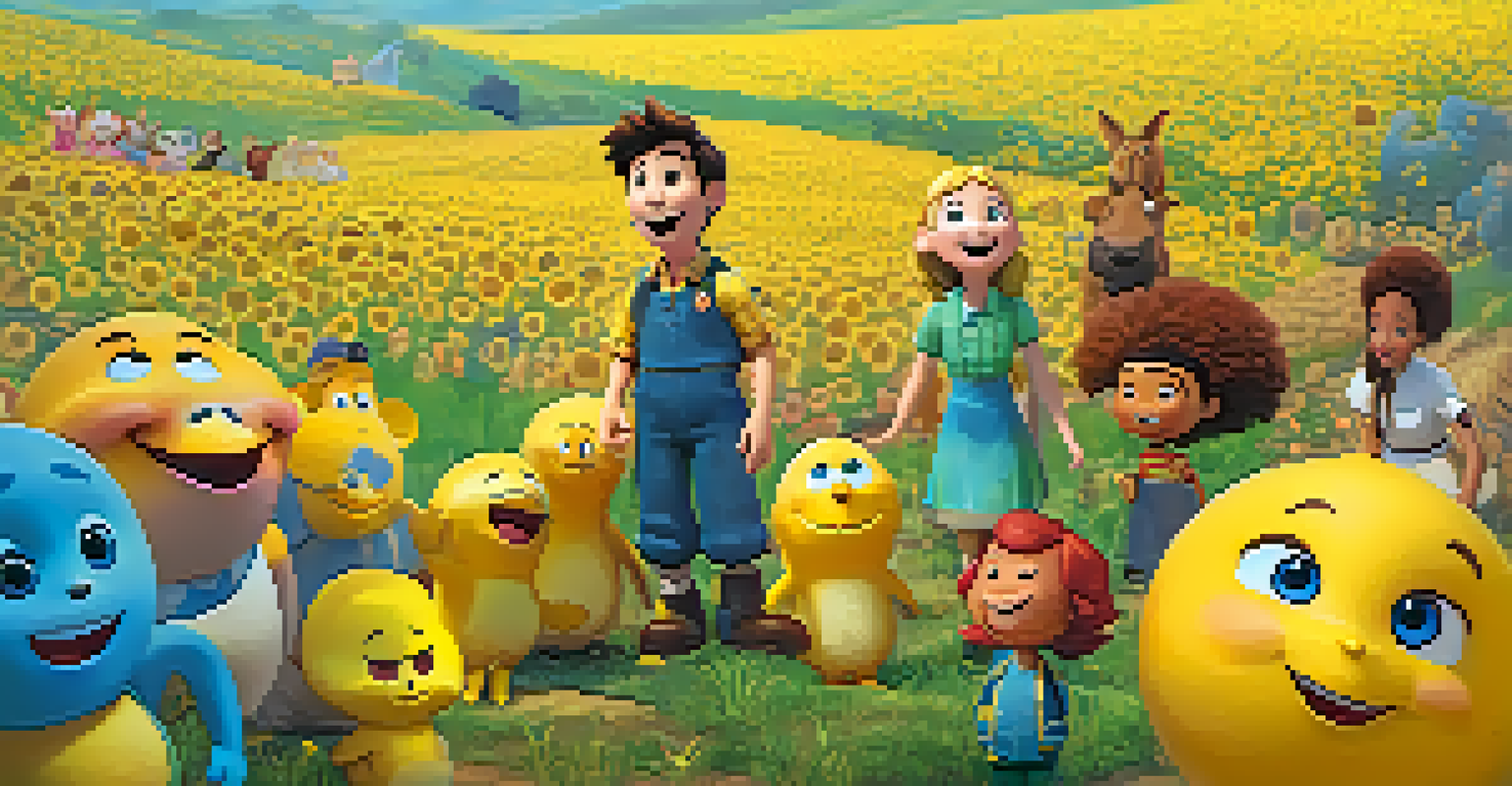The Role of Voiceover in Shaping Character Perspectives

Understanding the Power of Voiceover in Storytelling
Voiceover has a unique ability to convey a character's inner thoughts and emotions, providing insights that visuals alone cannot. This narrative device allows audiences to connect deeply with a character's personal journey. By hearing a character's voice, viewers can grasp their motivations, fears, and desires, enriching the overall story experience.
Voiceover is a way to express the thoughts and feelings of characters that would otherwise remain unvoiced.
For instance, think about classic films like 'The Shawshank Redemption,' where Morgan Freeman's voiceover adds layers to the story. His narration guides us through the protagonist’s struggles, making us feel their pain and hope. This emotional connection is often lost without the voiceover, illustrating its critical role in storytelling.
Moreover, voiceover can also create a distinct atmosphere, setting the tone for the narrative. It can evoke nostalgia, humor, or tension, depending on how it’s delivered. This versatility makes voiceover a powerful tool in shaping how audiences perceive and relate to characters.
Character Development Through Inner Monologues
Inner monologues articulated through voiceovers enable deeper character exploration. They reveal thoughts that might not be expressed through dialogue or actions, providing a richer understanding of motivations. This technique allows writers to show, rather than just tell, what a character is feeling.

Consider the character of Holden Caulfield in 'The Catcher in the Rye.' His internal dialogue gives readers a raw glimpse into his troubled mind, making his experiences relatable and poignant. Without voiceover, Holden’s complex emotional landscape would be challenging to convey effectively.
Voiceover Enhances Emotional Depth
Voiceover allows audiences to connect deeply with characters by conveying their inner thoughts and emotions that visuals alone may not capture.
This form of character development can lead to more relatable and nuanced characters, as audiences can see their vulnerabilities and conflicts. By listening to a character's thoughts, viewers often find themselves empathizing and forming connections that enhance their viewing experience.
Voiceover as a Tool for Emotional Engagement
Emotion plays a crucial role in storytelling, and voiceover can amplify this connection. A character's voice, infused with emotion, can evoke feelings in the audience that visuals may not fully capture. The tone, pitch, and pacing of a voiceover can stir empathy, joy, or sadness, making pivotal moments resonate more profoundly.
Narration is an art form that can bring the most vivid stories to life, allowing audiences to immerse themselves in the characters' inner worlds.
For example, in animated films like 'Inside Out,' the voiceovers of the emotions give life to abstract concepts, helping audiences to connect emotionally with the story. The character Joy’s upbeat voice contrasts with Sadness's softer tone, illustrating their distinct yet intertwined roles in Riley’s life.
This emotional engagement is vital for keeping audiences invested in the narrative. When viewers feel a character’s pain or joy through voiceover, they are more likely to remain emotionally tied to the story, enhancing their overall viewing experience.
The Role of Voiceover in Establishing Personality
Voiceover can effectively establish a character's personality, often providing a quick glimpse into who they are. The way a character speaks—whether it's witty, sarcastic, or earnest—can reveal their traits and quirks in a concise manner. This immediate insight can guide audience perceptions and expectations.
Take the character of Deadpool, for instance. His humorous and irreverent voiceover perfectly encapsulates his personality, making him instantly recognizable. This clever use of voiceover allows the audience to understand his motivations and worldview, creating a more engaging character.
Character Development Through Voice
Inner monologues in voiceovers provide insights into a character's motivations and vulnerabilities, enriching their relatability.
By using voiceover to highlight personality traits, creators can create memorable characters who stand out in the audience's minds. This added dimension makes the character relatable, as viewers often see parts of themselves reflected in their quirks and mannerisms.
Voiceover in Narrative Structure and Pacing
Voiceover can significantly influence the narrative structure and pacing of a story. It can act as a bridge between scenes, providing context or commentary that enhances the flow of the narrative. This seamless integration helps maintain audience engagement and comprehension.
For instance, in 'Fight Club,' the voiceover serves as a guiding narrative thread that weaves through the film's complex plot. It helps establish pacing by controlling how quickly information is revealed to the audience, creating suspense and intrigue.
This control over pacing can also create tension or relief, depending on how the voiceover is used. By deliberately choosing when to insert voiceover, creators can manipulate audience emotions and reactions, making the viewing experience more dynamic.
Cultural and Contextual Influences on Voiceovers
Cultural and contextual elements can greatly influence how voiceovers are perceived. The accent, dialect, or language of a voiceover can evoke specific cultural associations, shaping audience perceptions of the character. This aspect adds an additional layer of meaning to the story.
For example, a character with a British accent in a Hollywood film might be perceived as more sophisticated or authoritative compared to a character with a regional American dialect. These subtle cues can inform audience opinions and biases, whether consciously or subconsciously.
Cultural Influences on Voice Perception
The accent and dialect used in voiceovers can shape audience perceptions of characters, adding layers of cultural meaning to the narrative.
Understanding these cultural nuances can enhance storytelling, allowing creators to craft characters that resonate with diverse audiences. By thoughtfully considering voiceover elements, storytellers can ensure their characters are relatable and authentic across different cultural landscapes.
The Future of Voiceover in Modern Storytelling
As technology evolves, the role of voiceover in storytelling continues to transform. With advancements in artificial intelligence and voice modulation, there are new opportunities for character development and narrative expression. This innovation may lead to more immersive and personalized storytelling experiences.
Imagine interactive storytelling where characters can adapt their voiceovers based on audience choices or feedback, creating a unique viewing experience each time. Such advancements could enhance engagement and deepen emotional connections with characters.

While the future of voiceover in storytelling is still unfolding, one thing remains clear: it will continue to play a vital role in shaping character perspectives. As creators experiment with new technologies and techniques, audiences can look forward to fresh and exciting narratives that deepen their connection with characters.